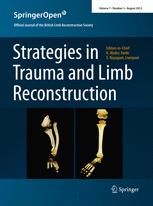
TRAUMA
ORIF with volar locking plates provide better functional outcome than external fixation
This report has been verified
by one or more authors of the
original publication.
Strategies Trauma Limb Reconstr. 2013 Aug;8(2):67-75. doi: 10.1007/s11751-013-0169-4. Epub 2013 Jul 28
Three randomized clinical trials were included in this meta-analysis which compared open reduction and internal fixation (ORIF) with volar locking plates to bridging external fixation in the treatment of unstable distal radius fractures. Disabilities of the Arm, Shoulder and Hand (DASH) scores at 3, 6, and 12 months were significantly better in patients who received ORIF. There was no significant difference between treatments for complication rates.
Unlock the full ACE Report
You have access to {0} free articles per month.Click below to unlock and view this {1}
Unlock NowCritical appraisals of the latest, high-impact randomized controlled trials and systematic reviews in orthopaedics
Access to OrthoEvidence podcast content, including collaborations with the Journal of Bone and Joint Surgery, interviews with internationally recognized surgeons, and roundtable discussions on orthopaedic news and topics
Subscription to The Pulse, a twice-weekly evidence-based newsletter designed to help you make better clinical decisions
Exclusive access to original content articles, including in-house systematic reviews, and articles on health research methods and hot orthopaedic topics
Or upgrade today and gain access to all OrthoEvidence content for just $1.99 per week.
Already have an account? Log in


Subscribe to "The Pulse"
Evidence-Based Orthopaedics direct to your inbox.
{0} of {1} free articles
Become an OrthoEvidence Premium Member. Expand your perspective with high-quality evidence.
Upgrade Now













































































